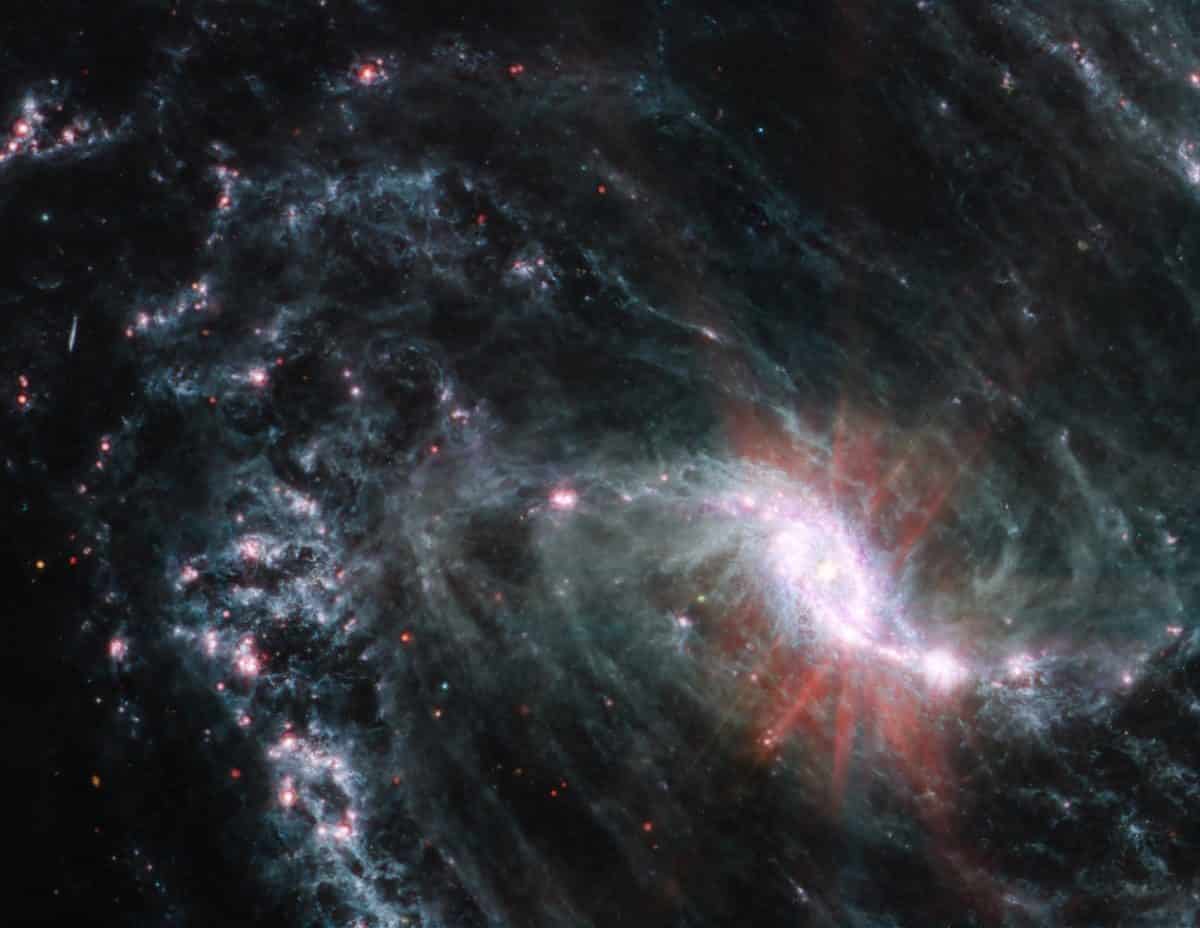
San Francisco: Researchers using NASA’s James Webb Space Telescope have revealed the first look at star formation, gas, and dust in nearby galaxies with unprecedented resolution at infrared wavelengths.
According to NASA, the data has enabled an initial collection of 21 research papers which provide new insight into how some of the smallest-scale processes in our universe — the beginnings of star formation — impact the evolution of the largest objects in our cosmos: galaxies.
The Webb observations are led by Janice Lee, Gemini Observatory chief scientist at the US-based National Science Foundation’s NOIRLab and affiliate astronomer at the US-based University of Arizona.
“The clarity with which we are seeing the fine structure certainly caught us by surprise,” said team member David Thilker of Johns Hopkins University in Baltimore, Maryland.
Webb’s Mid-Infrared Instrument (MIRI) images show the presence of a network of highly structured features within these galaxies, including glowing cavities of dust and massive cavernous bubbles of gas that line the spiral arms.
“We are directly seeing how the energy from the formation of young stars affects the gas around them, and it’s just remarkable,” said team member Erik Rosolowsky of the University of Alberta, Canada.
The American Space Agency further mentioned that this web of features appears to be built from individual and overlapping shells and bubbles where young stars are releasing energy in some regions of the nearby galaxies observed.
“Areas which are completely dark in Hubble imaging light up in exquisite detail in these new infrared images, allowing us to study how the dust in the interstellar medium has absorbed the light from forming stars and emitted it back out in the infrared, illuminating an intricate network of gas and dust,” said team member Karin Sandstrom of the University of California, San Diego.
